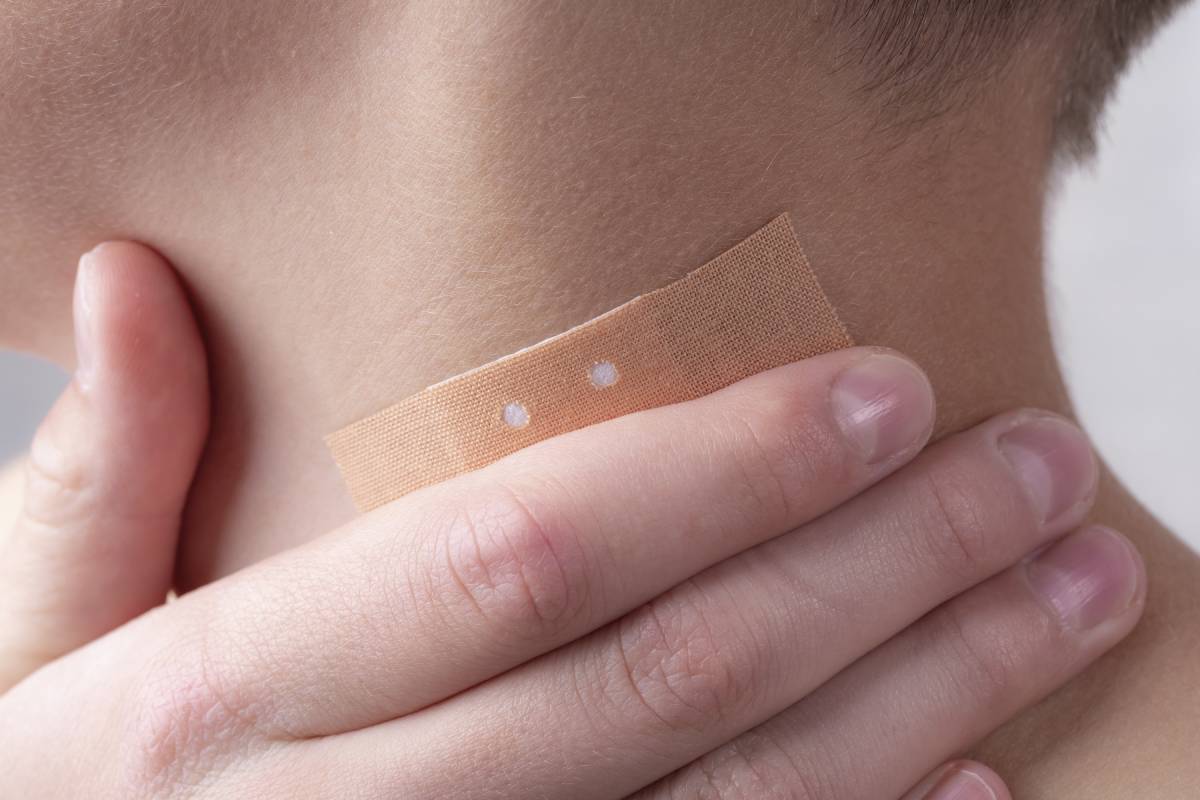The opioid crisis continues to loom large, only exacerbated by the current COVID-19 pandemic (1). Medical prescriptions for the alleviation of postoperative pain remain the primary source of opioids in circulation, and, to this day, opioids continue to ravage patient populations due to unauthorized use and distribution and over-prescription in some cases, alongside associated addiction and death. Side effects of opioid analgesia can include nausea, vomiting, sedation, respiratory depression and addiction (2), and severe postoperative pain is still reported by 20-40% of patients, especially in those having undergone abdominal, thoracic, orthopedic and pelvic surgeries (3). Furthermore, the current standard of care is the prescription of orally dosed opioid medication, which requires the patient to determine the frequency of dosing, and results in systemic biodistribution that loses efficiency by impacting healthy tissues, which is detrimental to patient health and may incur significant lasting effects. It is thus increasingly important to develop effective, safe, and viable alternatives to orally administered opioid-based postoperative pain medications (4). To this end, analgesic patches and films have proven increasingly promising.
Clinically, analgesic patches for postoperative pain management have taken on a variety of forms. First, lidocaine patches have long been used for postoperative pain treatment in a variety of contexts (5). For example, adjuvant treatment after total knee arthroplasty using lidocaine patches was found to be effective in reducing pain and decreasing the use of opioids, representing a viable component of multimodal analgesic therapy (6). Second, transdermal patches of buprenorphine, an opioid partial agonist, is also widely used for chronic pain syndromes, and, increasingly, acute postoperative pain (7,8). Finally, transdermal fentanyl patches have also been well-established for the effective management of acute postoperative pain (9). Remarkably, one study showed that a patch affixed 14 hours prior to surgery reached a higher constant concentration than the same dose setting of a constant intravenous infusion of fentanyl after surgery (10), without incurring any respiratory depression or other nefarious side effects.
In addition, both natural and synthetic polymers (including poly(anhydrides), poly(orthoesters), poly(esters), and poly(esteramides)) have garnered recent attention for their potential to deliver analgesia via implantable films, making drugs directly available to local tissue without any physical barriers (4,11). Most recently, a bio-resorbable poly(ester urea) film that delivers the non-opioid COX-2 inhibitor etoricoxib has emerged as a particularly promising model system for postoperative pain control (12). Poly (ester urea) composition, drug load, and film thickness can be finetuned to control etoricoxib elution, and pharmacokinetic data from an in vivo rat model showed the local tissue concentration of etoricoxib to be up to 23-fold higher in tissue then plasma. Importantly, applications extend beyond post-surgical pain; in a well-established mouse model of diabetic neuropathic pain, in vivo film implantation yielded efficient local etoricoxib delivery and effective pain relief for over 4 days post-implantation (12).
Multimodal postoperative pain management, including in the form of analgesic patches and films, require lower daily doses to achieve pain relief and aim to act specifically at the affected site, incurring less pronounced metabolic changes, minimal systemic side effects, and fewer drug interactions (13). Clinically, such alternative forms of non-opioid-based pain management systems are critical to curbing the opioid crisis while optimizing the patient experience, thereby warranting ongoing research and development efforts geared towards their efficient clinical implementation.
References
1. Manchikanti L, Vanaparthy R, Atluri S, Sachdeva H, Kaye AD, Hirsch JA. COVID-19 and the Opioid Epidemic: Two Public Health Emergencies That Intersect With Chronic Pain. Pain and Therapy. 2021. https://pubmed.ncbi.nlm.nih.gov/33718982/
2. Brennan TJ. Pathophysiology of postoperative pain. Pain. 2011.
3. Gerbershagen HJ, Aduckathil S, van Wijck AJM, Peelen LM, Kalkman CJ, Meissner W. Pain Intensity on the First Day after Surgery. Anesthesiology. 2013;
4. Brigham NC, Ji R-R, Becker ML. Degradable polymeric vehicles for postoperative pain management. Nat Commun 2021 121. 2021 Mar 1;12(1):1–13.
5. Galer BS, Rowbotham MC, Perander J, Friedman E. Topical lidocaine patch relieves postherpetic neuralgia more effectively than a vehicle topical patch: Results of an enriched enrollment study. Pain. 1999;
6. Sadigursky DI, de Castro Oliveira MI, Gilberto Gomes Macedo JI, Roque Paim Costa Junior FI, Lemos Azi MI, Figueiredo Alencar DI. Effectiveness of lidocaine patches for pain treatment after total knee arthroplasty ORIGINAL RESEARCH. 2016;
7. Chiodini Machado F, Carone Neto G, Oliveira de Paiva L, Cristina Soares T, Kenithi Nakamura R, de Freitas Nascimento L, et al. Transdermal buprenorphine for acute postoperative pain: a systematic review. Brazilian J Anesthesiol (English Ed. 2020;70(4):419–28.
8. Vadivelu N, Hines RL. Management of chronic pain in the elderly: Focus on transdermal buprenorphine. Clinical Interventions in Aging. 2008.
9. Hoy SM, Keating GM. Fentanyl transdermal matrix patch (Durotep® MT patch; Durogesic® DTrans®; Durogesic® SMAT): In adults with cancer-related pain. Drugs. 2008.
10. Jang JS, Hwang SM, Kwon Y, Tark H, Kim YJ, Ryu BY, et al. Is the transdermal fentanyl patch an efficient way to achieve acute postoperative pain control? A randomized controlled trial. Med (United States). 2018 Dec 1;97(51).
11. Stewart SA, Domínguez-Robles J, Donnelly RF, Larrañeta E. Implantable polymeric drug delivery devices: Classification, manufacture, materials, and clinical applications. Polymers. 2018.
12. Brigham NC, Nofsinger R, Luo X, Dreger NZ, Abel AK, Gustafson TP, et al. Controlled release of etoricoxib from poly(ester urea) films for post-operative pain management. J Control Release. 2021.
13. Lovich-Sapola J, Smith CE, Brandt CP. Postoperative Pain Control. 2015.
